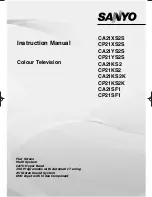
InZennio Z41
http://www.zennio.com
Tecnical Support:
http://support.zennio.com
55
Setting up a box as a dimming control brings up the objects
[Pn][Bi] Light
Indicator
(1 byte),
[Pn][Bi] Light On/Off
(1 bit) and
[Pn][Bi] Light
Dimming
(4 bits). The former acts as the dimming status object, which is
required to be linked to the analogous object from the dimmer and whose
value, in percentage, will be permanently reflected in the box. On their
side, control orders will be sent through one of the two remaining objects:
After a short press on the “turn on” button, the value “1” will be sent
through the
[Pn][Bi] Light On/Off
binary object, while a short press on the
“turn off” button will trigger the sending of the value “0”.
When a long press on the “turn on” button takes place, the object
[Pn][Bi]
Light Dimming
will send the light increment order corresponding to the
parameterised dimming step, while a stop order (value “8”) will be sent
through the same object as soon as the user releases the button.
When a long press on the “turn off” button takes place, the object
[Pn][Bi]
Light Dimming
will send the light decrement order corresponding to the
parameterised dimming step, while a stop order (value “0”) will be sent
through the same object as soon as the user releases the button.
Table 5 shows the number of steps (that is, of long presses) required for a
complete light regulation (from totally off to totally on, or vice versa) depending
on the value parameterised as the dimming step.
Dimming Step
Button Presses Required for
Complete Dimming (0 – 100%)
(1) 100%
1
(2) 50%
2
(3) 25%
4
(4) 12,5%
8
(5) 6,25%
16
(6) 3,1%
32
(7) 1,5%
64
Table 5
Dimming Steps
Note
:
most light dimmers implement light step dimming progressively (i.e.,
sending a dimmer a step order of 25% typically does not imply that the light
level is suddenly incremented/decremented by 25%, but a progressive
increment or decrement of the light level by 25% which is in fact interrupted if a
















































